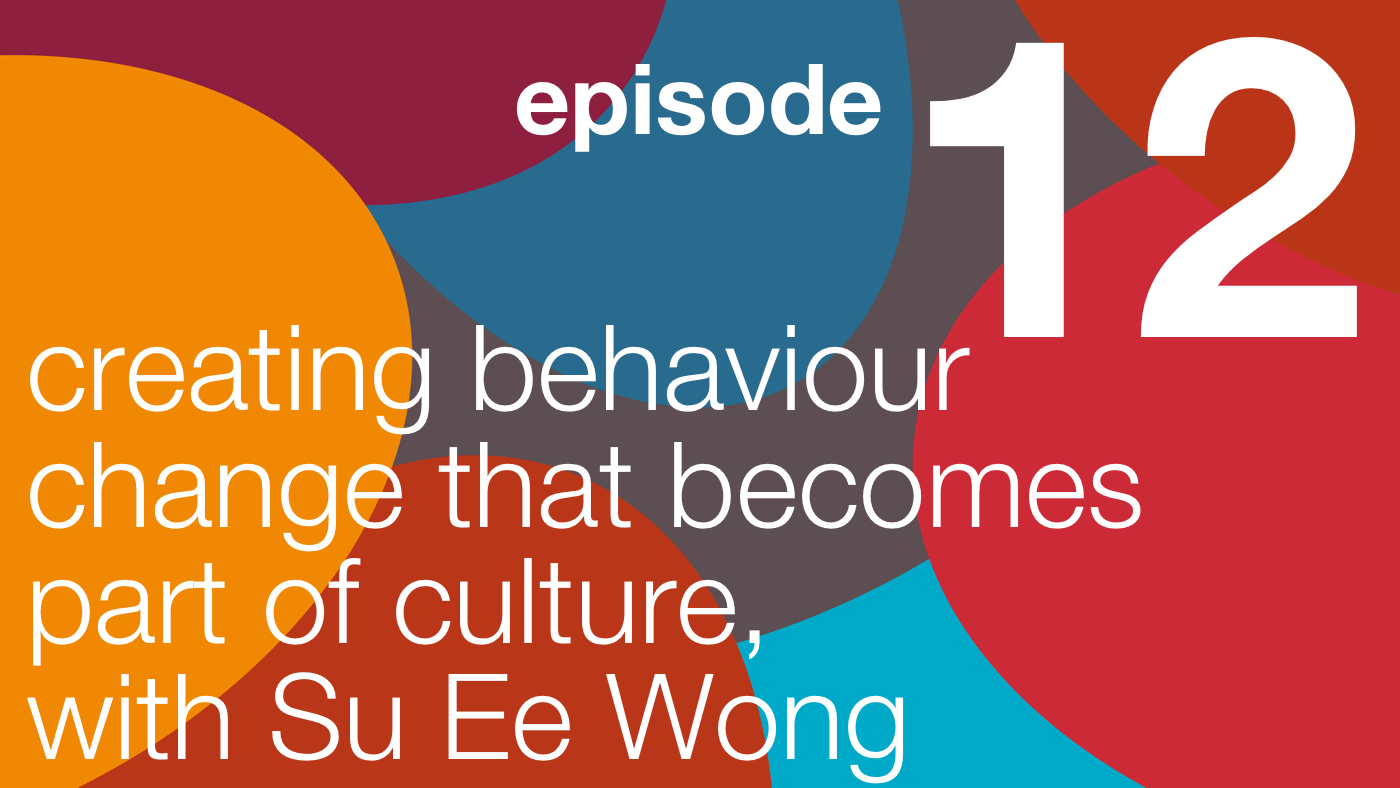The challenge with creating behavioural change is doing it well enough that people actually change their behaviour consistently. And beyond that, it’s about ensuring that other people in the organisation can observe this new behaviour around them so that they come to the realise this is simply “the way we do things around here” in other words, the organisational culture. When we set about creating behavioural change, the ultimate objective is for that change to become embedded in the culture, because that’s when we start to see the results we’re looking for.
Creating Behavioural Change that Becomes Part of Culture
In today’s podcast episode this is what we’re going to be exploring. Bruce is joined on the podcast by Su Ee Wong. Su Ee’s journey towards becoming a safety and health (S&H) professional is an unusual one. She started off in biomedical science and a serendipitous stint in the HR office of an academic institution sparked an interest in workplace safety and health.
The unique blend of her science background, HR experience, and S&H interest got her a Mid-Career Training Sponsorship where she was given the opportunity to train as an S&H professional in a University. As the core businesses of a University are research and teaching, she is able to apply her knowledge in research to better manage the S&H of staff and students.
Her passion is in creating a safe, healthy and happy environment that the community can thrive in. She strongly believes that the activities we engage in should do no harm to our people or to Mother Earth. [1]
JOIN SU EE WONG AND BRUCE HALLAS AS THEY DISCUSS:
- Su Ee’s post that told of an experiment conducted around the public safety problem of how to change the behaviour of jaywalkers who were crossing the street no matter what colour the light was.
- Making policies fun, interesting, and engaging can help catalyze creating behavioural change.
- The importance of creating policies that have as little friction as possible to follow.
- When we want to change behaviour, a lot of us think that should be through punishment, like handing out fines for doing something. We think if we give them a slap on the wrist, that changes behaviour. But it might not be sustainable in the long run. How do we get something more creative that is more positive to change the behaviour and then reinforce it later so that this behaviour sticks until it becomes second nature? In organizations, people at different levels will have different cultural norms. Though one might craft the perfect awareness campaign based on research gathered from within the various organizational levels at their local office, those same campaigns might not elicit the response one is anticipating in the overseas office possibly due to a sort of a national culture. The importance or recognizing policy “champions” for their work.
- How do we incorporate people’s natural biases in how we design awareness campaigns?
- Creating an environment and culture where people can share their insights and engage with leadership or the local champion, without blame, to create trust between workers and leaders, because that will be one of the best ways to manage problems knowing that leadership can’t be everywhere all at once.
- What Su Ee Wong did to understand root causes of behaviours in her organization.
- Awareness is just as much about policy-makers themselves becoming aware as it is about crafting the right kinds of campaigns and procedures.
FURTHER STUDY AND RESEARCH
Re-thinking the Human Factor Ep 09 with Dan Ariely
Shortcut by John Pollock
Choice Architecture
MORE ABOUT SU EE WONG:
- LinkedIn [1]

